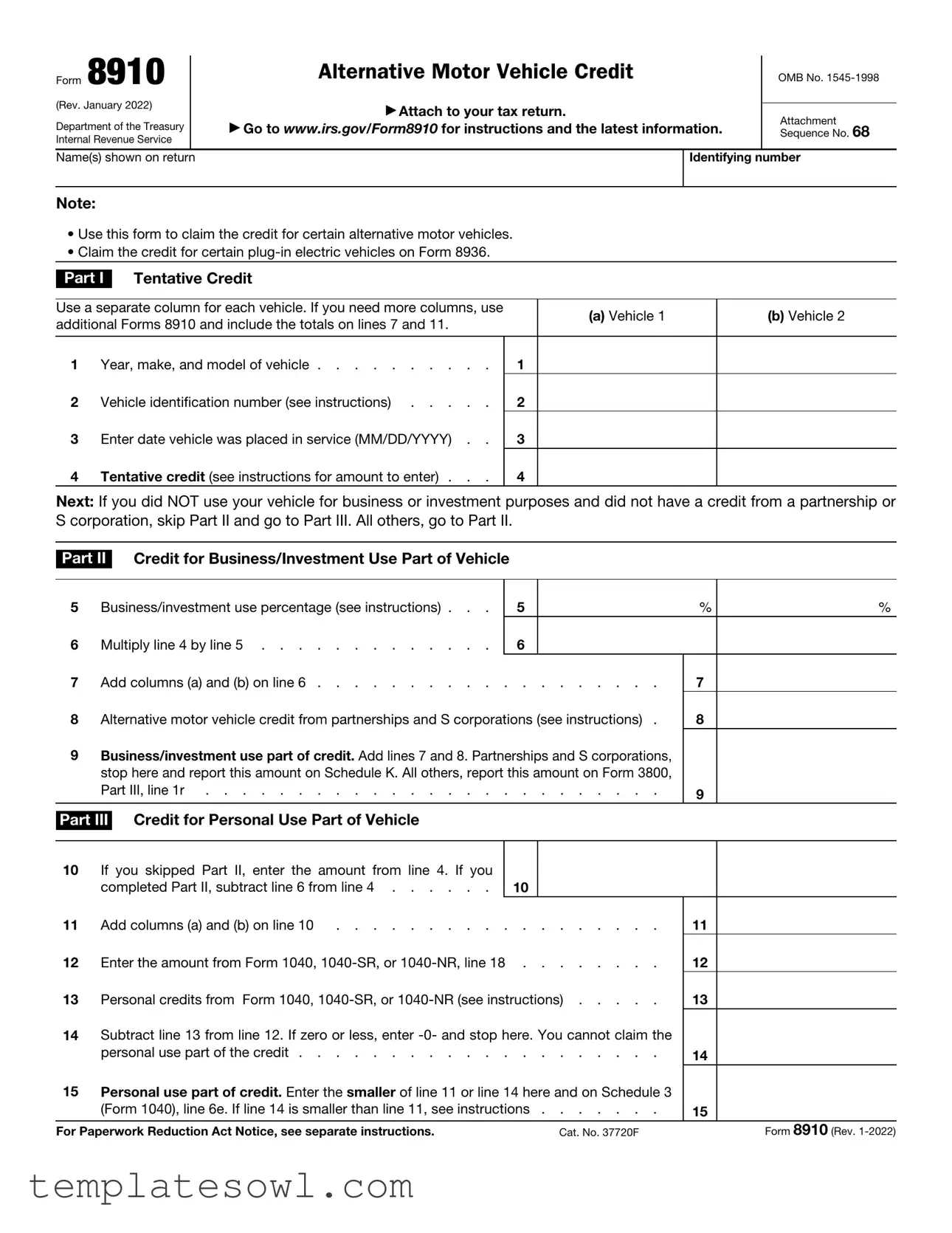Filling out the Auto Credit Personal form, officially known as Form 8910, can often feel daunting. It's essential to take your time and pay close attention to detail, as even small mistakes can lead to delays or issues with your tax return. Here are some common pitfalls to avoid when completing the form.
One frequent mistake is failing to use the correct vehicle identification number (VIN). The VIN is unique to each vehicle and is crucial for accurately claiming the credit. Double-checking this number against your vehicle documents ensures that the credit goes to the right car.
Another common error involves the year, make, and model of the vehicle. Ensure that you enter the information accurately in Part I. If this information does not match IRS records, it may create discrepancies that could slow down processing.
Using incorrect dates is also a mistake that can be easily avoided. The date the vehicle was placed in service must be entered in the MM/DD/YYYY format. Forgetting to use this specific format can lead to confusion and potentially cost you your credit altogether.
Individuals might skip over Part II if their vehicle was not used for business or investment purposes. This may seem like a small detail, but it's essential to follow instructions closely. Not completing all required sections can lead to an incomplete filing.
Additionally, using an inaccurate business/investment use percentage can lead you astray. Make sure to assess and enter this percentage carefully. Failing to document your calculations could result in an exaggerated or understated claim.
People often forget to add their alternative motor vehicle credit from partnerships or S corporations in Part II. Skipping this step can impact the total credit available to you, so always consult the instructions to see what's necessary for your particular situation.
Moving to Part III, a frequent oversight occurs when individuals fail to correctly enter data from previous lines. For example, if you skip subtracting line 6 from line 4 without proper calculations, it can lead to overstating your personal use credit.
When it comes to the final numbers, it’s all too easy to forget to enter the smaller of line 11 or line 14 in the spot requested. This step is crucial, as it ultimately determines the credit you’ll report on your tax return.
Lastly, some might overlook the importance of attaching this form to their tax return. Ensure that you follow through and include the form so that the IRS receives it along with your submission. Neglecting this step can lead to delays in processing.
By paying careful attention to these common mistakes, you can greatly improve your chances of successfully claiming the Auto Credit. Taking a methodical approach makes the process smoother and more manageable, allowing you to focus on what matters most: enjoying your alternative motor vehicle!

